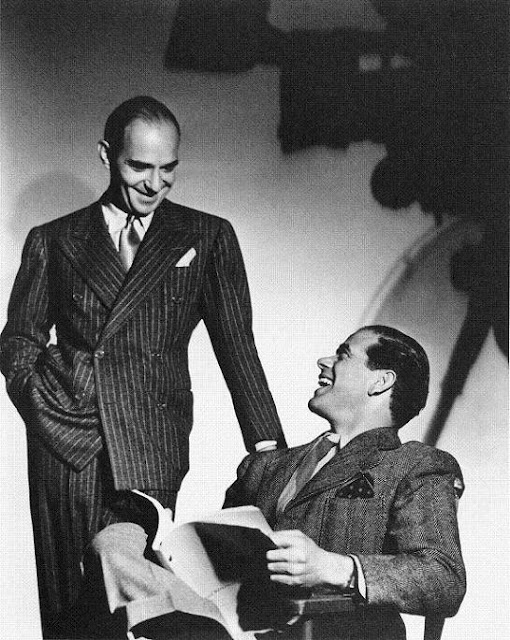
I should really break this post into two parts but I'm getting sleepy so I'll take a chance and try to say everything I have to say at once. Don't worry, I'll go fast.
Before blogs we had to rely on fan magazines and books for information about animation. Fan magazines were hard to get hold of and books tended to be coffee table books which were expensive and tended to take a safe, middle-of-the road position about everything. Every book started with Egyptian wall paintings and zoetropes. The coffee table books had big, wasteful margins, I guess to make them appear high class.

Cartoonists seldom had a say about what was in these books. Maybe Ollie Johnston and Frank Thomas did but no one I know. Putting these things together was usually the job of professional writers and Vasser-educated New York editors. Funny cartoons were considered low rent and were hardly mentioned.
 The first glimmers of an improvement came with Joe Adamson's "Tex Avery : King of Cartoons" and Leslie Carbaga's book on the Fleischers. At last something for the funny cartoonists! It wasn't much but it was something and we all eagerly bought the books and copied the model sheets. I'd hoped this would be the trickle that would become a cataract but that isn't exactly what happened.
The first glimmers of an improvement came with Joe Adamson's "Tex Avery : King of Cartoons" and Leslie Carbaga's book on the Fleischers. At last something for the funny cartoonists! It wasn't much but it was something and we all eagerly bought the books and copied the model sheets. I'd hoped this would be the trickle that would become a cataract but that isn't exactly what happened. Anyway, fast forward to the present. Things are a bit better now but the wine and cheese people still control publishing and there are only a few coffee table books about funny cartoons. That's OK, now cartoonists have the internet. Finally we can talk to each other and compare notes. We can put up favorite scenes on YouTube and argue about them. Now that the fans and the people who actually draw cartoons have a voice there's a big shaking out going on. Reputations are rising and falling and who knows who'll be left standing when it's run its course.
There are a number of good animation opinion sites but the best of them all in my opinion is John K's "All Kinds of Stuff:" http://www.johnkstuff.blogspot.com/ This is the most intelligent discussion of funny cartoons that I've ever seen.

Recently John wrote an essay about McKimson's characters shoving and being brash to each other all the time. According to John that's the way mild-mannered McKimson probably viewed his co-workers. John implies that we ought to be able to do things like that in cartoons too. Whether you agree or disagree you'll have to concede that this is the type of discussion cartoonists should be having. Let historians argue about who directed what and when. We cartoonists should be talking about the best way to have a character fall on his head.
In other posts John talked about comedic acting and what a pity it is that we see the same five expressions on characters all the time, even in features. He passionately argued for a re-evaluation of cartoon acting, backing up his argument with grabs from classic cartoons and "The Honeymooners." Once again you have to concede that this is the kind of discussion cartoonists should be having. You won't get it from clueless writers and executives and you won't get it from coffee table books. This is what happens when cartoonists talk to cartoonists.
John's blog is full of original ideas about background painting, writing, drawing, caricature, animation, direction, character design and the like. Before his blog all we had were Disney fans putting up old model sheets. You wonder why other cartoonists (including me) seldom put up our own theories in such an urgent and forceful way. My guess is that we were all anesthetized by the books that were out and were lolled into thinking that only professional writers and editors knew enough about the subject to have opinions. Well that era is gone. John shattered it. 

What lies in the future for John's site? I don't know. I always worry that he'll get too busy to keep it up. He certainly shows no sign of caving in to convention. Recently John tackled stereotyping in cartoons. No one wants to bring back racism or gay bashing but the drunken Irishman, the buck-toothed upper-class Englishman, the thick-lipped black man, the Mafioso Italian, the effeminate gay, and the whooping indian were genuinely funny and no adequate substitute has ever been found. Speaking as a cartoonist to other cartoonists he seems to ask, "Wouldn't you have fun drawing stuff like this?" I can't wait to read the comments!
Well, it's a jumble but I'm too sleepy to rewrite it. My apologies to authors of good will who were slighted in my too-brief history of animation publishing.

 A question: let's say you're in a restaurant, the kind where you pour the drink yourself...do you take whatever the machine offers straight or do you mix and match your drink?
A question: let's say you're in a restaurant, the kind where you pour the drink yourself...do you take whatever the machine offers straight or do you mix and match your drink?




















